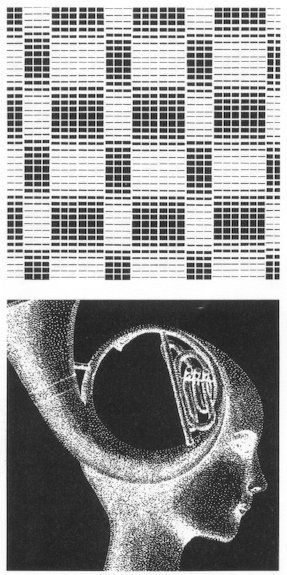|
(3) Creating planes using points When points move, or when points gather, we become aware of a plane. Also, by the sizes, big and small, the spacing in the location, loose or tight, it becomes possible to create a sense of unevenness to a plane. In short, by structuring points, it is possible to express a curved plane, shadow, and other complicated solids. Beginning with Seurat and pointillism, to Briget Riley, there are few artists who create their works using points, but in the graphic design world, because of the invention of a photostat, a vast formative arts of points are sent from the printing press to cities every day. A photostat is expressed by replacing the gradual change of concentration in photography into the difference of sizes of an area. As we can know by looking at advertisements in newspapers with a magnifying glass, a delicate gradual change of concentration is expressed meticulously, that many various sizes of points are arranged and look dark where large points gather and nearly white where small points gather. · The example in Figure 32 shows
a sharp modern sense of the blank part around a point -
applied to the blank fields, the width of the focus is being changed very
slightly and makes delicate rough and crowded parts around the whole collection
of square points, a kind of "flash" - just like
the effect of the shine off of well polished curved metal.
|

